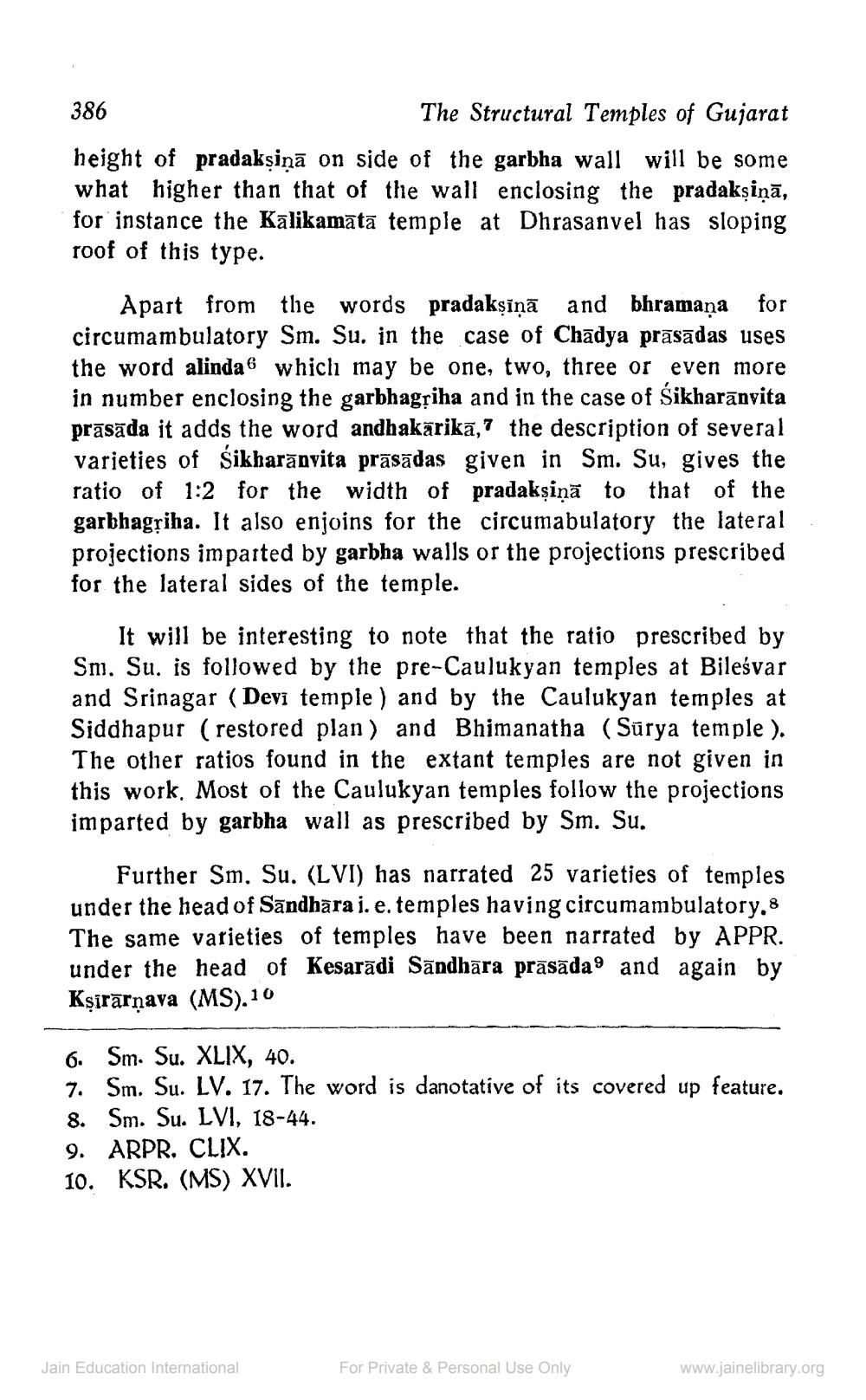________________
386
The Structural Temples of Gujarat
height of pradakṣiņā on side of the garbha wall will be some what higher than that of the wall enclosing the pradakṣiņā, for instance the Kālikamātā temple at Dhrasanvel has sloping roof of this type.
Apart from the words pradakṣīņā and bhramaṇa for circumambulatory Sm. Su. in the case of Chādya prāsādas uses the word alinda which may be one, two, three or even more in number enclosing the garbhagriha and in the case of Sikharānvita prāsāda it adds the word andhakārikā," the description of several varieties of Sikharānvita prāsādas given in Sm. Su, gives the ratio of 1:2 for the width of pradakṣiņā to that of the garbhagriha. It also enjoins for the circumabulatory the lateral projections imparted by garbha walls or the projections prescribed for the lateral sides of the temple.
It will be interesting to note that the ratio prescribed by Sm. Su. is followed by the pre-Caulukyan temples at Bileśvar and Srinagar (Devi temple) and by the Caulukyan temples at Siddhapur (restored plan) and Bhimanatha (Surya temple). The other ratios found in the extant temples are not given in this work. Most of the Caulukyan temples follow the projections imparted by garbha wall as prescribed by Sm. Su.
Further Sm. Su. (LVI) has narrated 25 varieties of temples under the head of Sandhara i. e. temples having circumambulatory.8 The same varieties of temples have been narrated by APPR. under the head of Kesarādi Sāndhāra prāsāda9 and again by Kṣirārṇava (MS).10
6. Sm. Su. XLIX, 40.
7. Sm. Su. LV. 17. The word is danotative of its covered up feature.
8. Sm. Su. LVI, 18-44.
9. ARPR. CLIX.
10. KSR. (MS) XVII.
Jain Education International
For Private & Personal Use Only
www.jainelibrary.org




